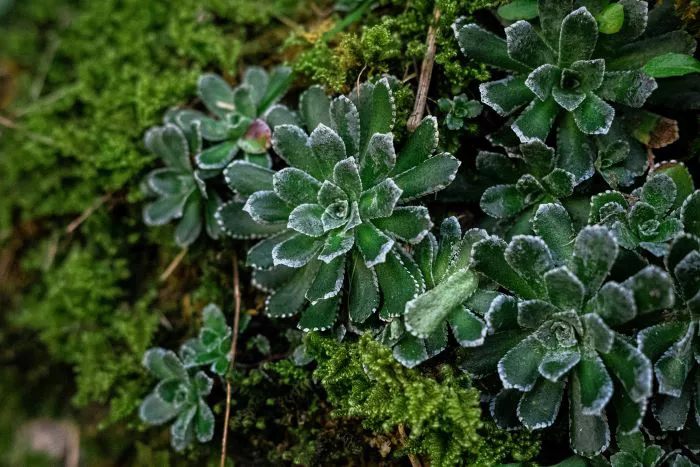Succulents are popular for their unique shapes, vibrant colors, and low maintenance requirements. One of the most rewarding aspects of succulent care is propagation, particularly through cuttings. Planting succulent cuttings without roots can seem daunting, but it is a straightforward process that can yield beautiful new plants. This article will guide you through the steps of planting succulent cuttings without roots, ensuring successful growth and development.
Understanding Succulent Cuttings
Succulent cuttings are sections of the plant that can develop into new individuals. These cuttings can be leaves or stems. When propagated correctly, they can grow roots and thrive as independent plants. Understanding the anatomy of succulent cuttings is essential for successful propagation. Healthy cuttings will have firm, plump tissues, indicating that they are well-hydrated.
Preparing for Propagation
Before planting succulent cuttings, it is important to gather the necessary materials and prepare your workspace. Here are the essential items you will need:
Healthy Succulent Plant: Choose a healthy parent plant from which to take cuttings. Look for plants that are free from pests and diseases.
Sharp, Clean Tools: Use sharp scissors or a knife to take cuttings. Ensure that your tools are clean to prevent infection.
Well-Draining Soil: Use a potting mix designed for succulents and cacti. This type of soil promotes drainage and prevents root rot.
Containers: Choose small pots or trays with drainage holes to plant your cuttings.
Watering Can or Spray Bottle: You will need a way to water the cuttings lightly.
Taking Cuttings
Once you have prepared your materials, it is time to take cuttings from the parent plant. Follow these steps for successful cutting:
Select the Right Part: Choose healthy leaves or stems from the parent plant. For leaf cuttings, select mature, plump leaves. For stem cuttings, choose healthy stems with several segments.
Make the Cut: Using your clean scissors or knife, cut the leaf or stem at the base. For leaf cuttings, make sure to include the entire leaf. For stem cuttings, cut just below a node, which is the area where leaves emerge.
Allow to Callous: After taking the cuttings, place them in a dry, shaded area for a few days. This allows the cut surfaces to callous over, which helps prevent rot when planted.
Planting the Cuttings
Once the cut surfaces have calloused, you can proceed to plant the cuttings. Follow these steps for successful planting:
Prepare the Soil: Fill your chosen containers with the well-draining soil mix. Leave some space at the top to avoid overflow when watering.
Plant the Cuttings: For leaf cuttings, place them flat on the soil surface. For stem cuttings, insert the cut end into the soil about an inch deep. Ensure that the cuttings are stable and upright.
Firm the Soil: Lightly press the soil around the cuttings to eliminate air pockets. Be careful not to compact the soil too much, as succulents prefer loose, aerated soil.
Watering: After planting, water the cuttings lightly. Use a spray bottle or a watering can to moisten the soil without soaking it. The goal is to provide some moisture while avoiding overwatering.
Caring for the Cuttings
Proper care is essential for the successful growth of succulent cuttings. Here are some important care tips:
Light Requirements: Place the planted cuttings in a location with bright, indirect light. Avoid direct sunlight for the first few weeks, as it can stress the cuttings.
Temperature and Humidity: Succulent cuttings prefer warm temperatures between 70°F and 80°F (21°C to 27°C). They thrive in low humidity environments, so ensure good air circulation.
Watering Schedule: Allow the soil to dry out completely between waterings. Depending on the humidity and temperature, this may mean watering every couple of weeks. Always check the soil moisture before watering again.
Monitoring for Roots: After a few weeks, check for root development. You can gently tug on the cuttings to feel for resistance, which indicates that roots are forming.
Signs of Successful Growth
As your succulent cuttings begin to establish roots, you will notice several signs of successful growth:
New Growth: Look for new leaves or stems emerging from the cuttings. This is a positive sign that the plant is adapting and growing.
Healthy Appearance: The cuttings should remain firm and plump. Signs of shriveling or discoloration may indicate that the cuttings are stressed or not receiving adequate care.
Root Development: If you gently remove the cutting from the soil, you should see white roots developing. This is a clear indication that the cutting is ready to thrive as an independent plant.
Transplanting Established Cuttings
Once your succulent cuttings have developed strong roots and show signs of healthy growth, it may be time to transplant them into larger pots. Here are the steps for successful transplanting:
Choose the Right Pot: Select a pot that is slightly larger than the current one. Ensure it has drainage holes to prevent water accumulation.
Prepare the New Soil: Use fresh, well-draining soil designed for succulents.
Remove the Cutting: Gently remove the rooted cutting from its current pot. Be careful not to damage the roots.
Plant in the New Pot: Place the cutting in the new pot and fill in around the roots with soil. Ensure that the plant is stable and upright.
Watering: Water the newly transplanted cutting lightly. Allow the soil to dry out before watering again.
Conclusion
Planting succulent cuttings without roots is a rewarding process that allows you to propagate new plants easily. By following the steps outlined in this article, you can successfully take cuttings, allow them to callous, and plant them for growth. Providing the right care, including light, temperature, and watering, will help ensure that your cuttings thrive. With patience and attention, you can enjoy the beauty of new succulent plants grown from cuttings. Embrace the journey of propagation and watch your succulent collection expand.


